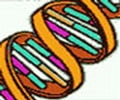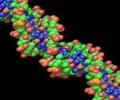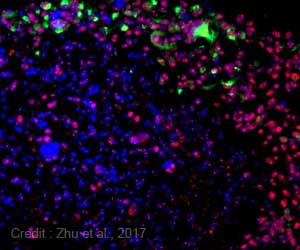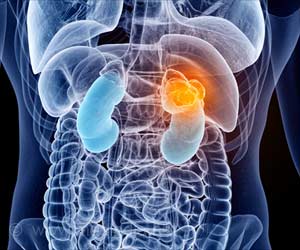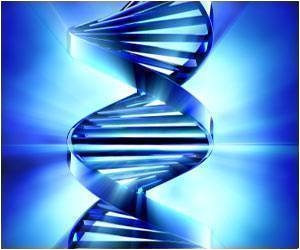
‘TOP2-DPCs are most potently formed by pharmaceutical drugs that humans exploit to eradicate cancer cells.’
Tweet it Now
To visualize how these proteins choreograph DPC repair, one must first know how DPCs are created. Matthew Schellenberg, Ph.D., an NIEHS visiting fellow and lead author on the paper, said when DNA becomes tangled inside of cells, organisms use a protein called topoisomerase 2 (TOP2) to untangle it. "Imagine your DNA is a giant ball of yarn," Schellenberg said. "TOP2 cuts and reties individual threads to disentangle the ball."
Schellenberg explained that TOP2 normally conceals its cut DNA ends within the core of the TOP2 protein that encircles DNA. Doing so ensures the protein can complete the second part of its job, which is rejoining DNA ends. However, chemotherapeutic drugs or environmental chemicals sometimes block the protein’s DNA-retying ability, so that TOP2 remains stuck on DNA. This situation creates a stable TOP2-DPC complex, which leads to the accumulation of severed DNA that kills cells.
The TOP2-DPC danger
Williams likened TOP2-DPCs to ticking time bombs for cells. He said these molecular charges are armed by TOP2’s interaction with environmental toxicants, chemical metabolites, tobacco exposures, or DNA damage caused by ultraviolet light.
Advertisement
"In this study, we discovered a new molecular disarmament apparatus for these cell-killing bombs," Williams said. "ZATT is like a bomb sniffing dog, so when it locates its target, it sounds an alarm to mobilize the recruitment of TDP2, which cuts the red wire to disarm these threats."
Advertisement
"We’ve discovered how we defend against this potent means of cell killing," Schellenberg said. "It is our hope that this information will enable development of new drugs that target these defenses. By lowering the defenses, we may make drugs that kill cancer cells more effective."
Source-Eurekalert






